Unique, Cool, and Unusual Houseplants You Need to Grow (With Pictures)
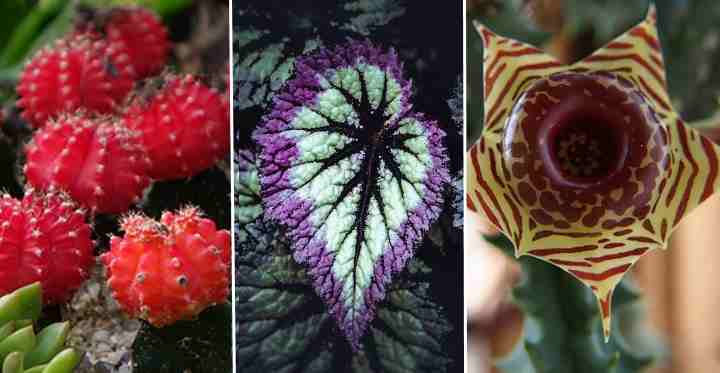
Many houseplants are easy to grow indoors and bring a wonderful touch of nature and greenery to any room. Some of the coolest, most unusual, and unique indoor plants have a natural aesthetic appeal. Glossy green foliage, colorful leaves, weird and wonderful shapes, and funny growing habits all add to the beauty of many rare and uncommon aesthetic houseplants.
What are some beautiful houseplants that are strange, unusual, and unique? Here are 10 of the coolest indoor plants that are easy to care for:
- Nerve plants
- Hoya hearts
- Sensitive plant
- Moon cactus
- Donkey’s Tails
- Watermelon peperomia
- Banana shrub
- Staghorn fern
- Snake plant
- Living stones
When it comes to caring for houseplants—even if they are unique, rare, unusual, or cool—there are a few general rules to follow. First of all, only water them when the soil is partly dry and allow water to drain completely. Keep houseplants in bright locations with indirect sunlight. Also, don’t place indoor plants next to cold drafts or heating units.
With proper care, you can enjoy your beautiful, unique plants for many years to come. Their weird growth habits or funny leaves can also be a great talking point with your guests. You may even be able to propagate some rare plants to give them as gifts.
In this article, you will learn about different types of unique and cool houseplants.
Unique Houseplants: Beautiful and Aesthetic Indoor Plants (With Pictures)
Rose Grape (Medinilla magnifica)
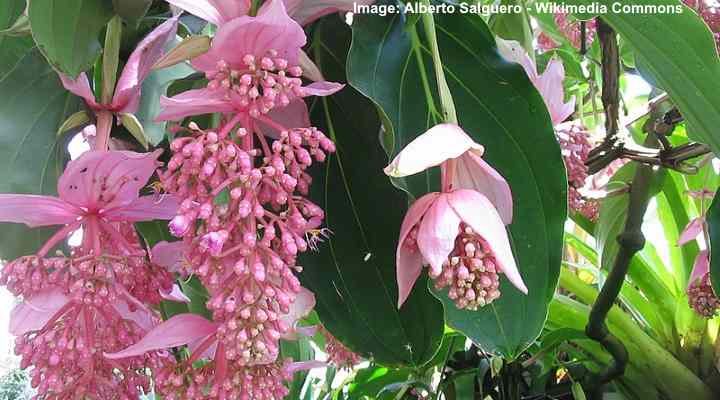
The rose grape is one of the most unusual and beautiful plants you can grow indoors. As its botanical name suggests, this is a magnificent plant. The rose grape has glossy green leaves with wavy edges. In spring, you can enjoy its stunning pink flower heads that are clusters of drooping small flowers.
Although the leaves can grow up to 1 ft. (30 cm) long, you can control its growth by growing it in a container. Care for a rose grape plant by giving it plenty of humidity and keeping it in a bright location with partial shade.
Pinstripe Calathea (Calathea ornata)
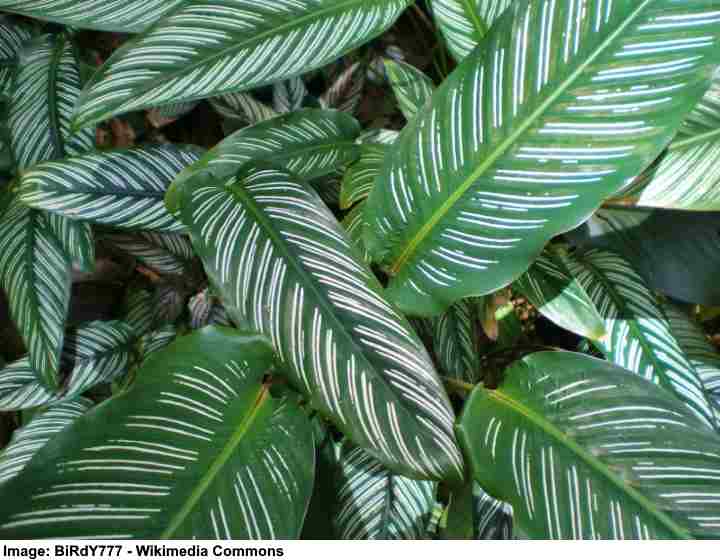
Calatheas are cool houseplants thanks to the exciting designs on their foliage. The pinstripe calathea is one of the best examples of a tropical foliage plant you can grow at home. Large green elongated, ovate leaves have striking pinstripe markings radiating from the central stem. The unusual feature of many calatheas is the dark purple or burgundy colors on their underside.
Other types of calathea plants to complement a modern interior include:
- Rattlesnake plant (Calathea lancifolia)—Long, lanceolate light-green leaves with distinctive dark green markings. A deep burgundy color on the underside makes this a cool houseplant.
- Zebra plant (Calathea zebrina)—As its name suggests, zebra-like green patterns help to identify this easy-to-care-for indoor plant.
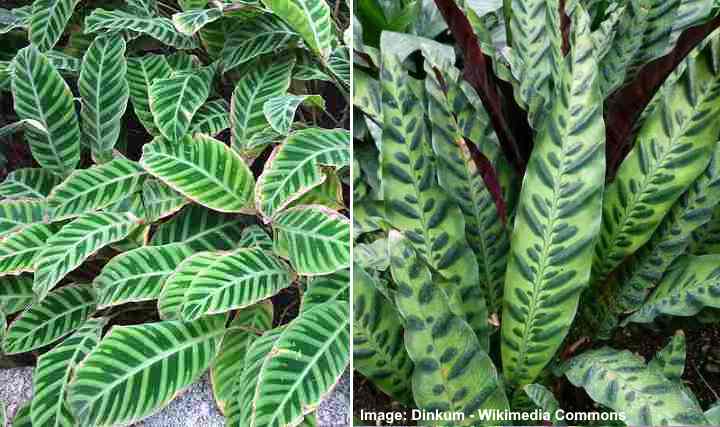
Calathea zebrina (left) and calathea lancifolia (right)
Snake Plant (Sansevieria trifasciata)

Sansevieria plants not only require little care and water, but they also have unusually long leaves that look like swords growing straight out of the ground. Commonly called snake plants, these evergreen houseplants have stiff fibrous leaves that can grow up to 35” (90 cm) tall. Due to the long, sharp appearance of the leaves, it’s no wonder this cool plant has the name “mother-in-law’s tongue.”
Snake plants are excellent as unique ornamental houseplants. They can survive in low light conditions and only need water once in a while.
Check out other varieties of sansevieria for their stunning aesthetic appearance. Some have dark green long tapered leaves, and others have green and yellow variegated broad leaves.
Begonias

Begonias are on the list of unique houseplants that are easy to look after due to their unusual foliage. There are over 1,800 species of begonias, all with varying leaf shapes and colors. Begonias also produce beautiful flowers when you care for them properly.
Some begonia varieties have large, deeply-veined leaves with dark green, purple, silver, and yellow patterns. One begonia cultivar with very unusual leaves has a marking like a large swirl. Other begonia cultivars have variegated leaves with reddish-brown, yellow, and purple colors all on one leaf—highly unusual in the plant kingdom.
Red Aglaonema
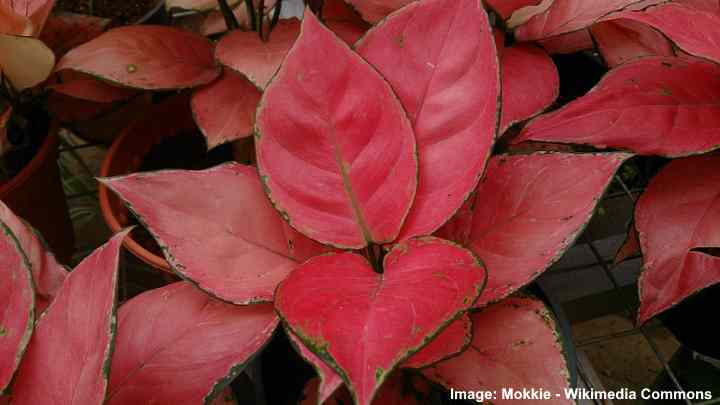
Belonging to a family called Chinese evergreens, the red aglaonema is unusual plant due to its stunning red foliage. These colorful ornamental aesthetic plants look great if you want to brighten up your room. Other Aglaonema cultivars have unique bright green leaves with pink edges and tips.
One of the cool features of these plants is that they help clean your air. Read this article to find out about more air-cleaning plants that NASA has discovered.
Cool Houseplants: Crazy and Funny Indoor Plants
Some indoor plants can be called cool houseplants because of their funky look and weird leaves. Let’s look at some of the best and coolest plants that are easy to grow at home.
Hoya “Lucky Heart” (Hoya kerrii)
Hoya plants are a type of succulent, and the “Lucky Heart” hoya has cool, heart-shaped leaves. You often find these unusually-looking plants growing as a single leaf in a pot. And, they are popular gifts around Valentine’s Day.
The thick fleshy leaves of this unusually-looking succulent plant are usually 2.5” (6 cm) broad. Being a type of succulent, hoya ‘sweetheart’ plants are straightforward to care for. It is rare these heart-shaped cuttings root and propagate. But with minimal care, you can enjoy this unique plant for many years.
Nerve Plants (Fittonia)
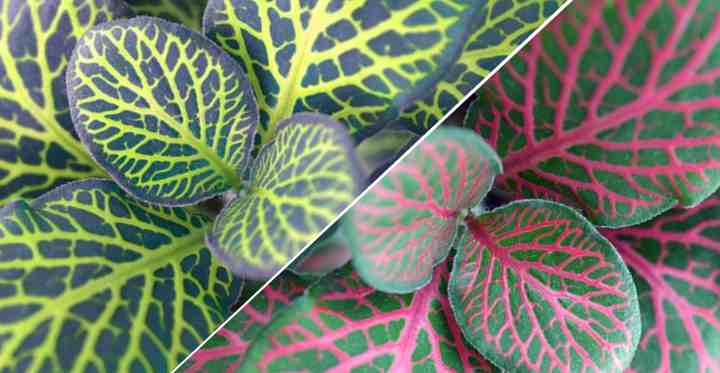
If you’re looking for an unusual, cool plant with brightly-colored foliage, then nerve plants are an excellent choice. These plants get their common name from the colorful nerve-like patterns on the leaves. They are also called vein plans, painted net plants, and mosaic plants.
Some of the most unusual varieties have lime-green patterns that look like leafless trees. Also, check out nerve plants with burgundy leaves and red patterns, dark green foliage with white veins, and plants with yellow and green mosaic patterning.
Any of these small, unusual houseplants will brighten up a corner of your home.
Staghorn Fern (Platycerium)
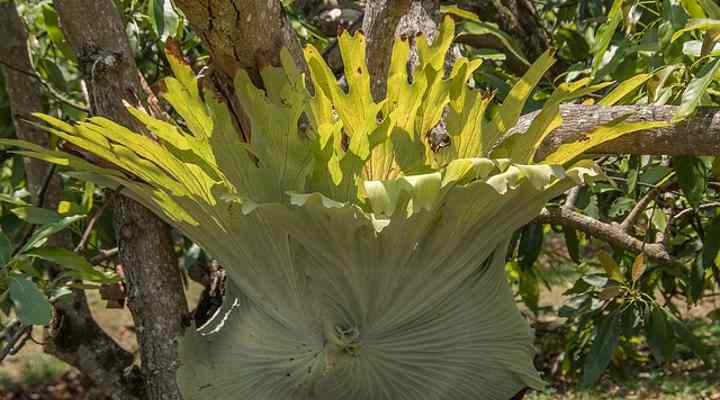
There are two reasons why staghorn ferns are classed as cool and unusual plants. First, their leaves resemble elk’s or stag’s horns. Secondly, staghorn ferns can grow attached to board mounts with very little soil and some moss. These ferns grow well indoors and are straightforward to care for.
Another reason why staghorn ferns are unique among varieties of ferns is due to their broad, glossy leaves. Traditional ferns tend to have leaves that are pinnate fronds made up of tiny leaflets.
Moon cactus (Gymnocalycium mihanovichii)
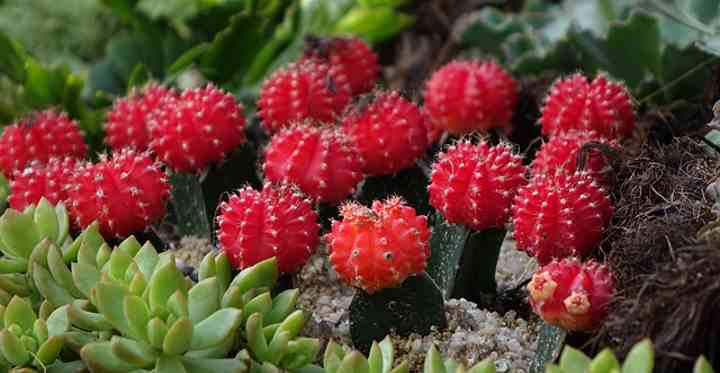
The moon cactus is one of the weirdest types of cactus you will ever come across. The cool-looking plant has a green rootstock with a brightly-colored ribbed ball that sits on top. This unusual plant is a grafted cactus that comes in pink, orange, red, or yellow colors.
You can grow a single cactus as a cool specimen plant in a pot, or you can grow several moon cacti together to create a fascinating colorful succulent display. It doesn’t matter how you decide to display this unique plant; it’s sure to grab everyone’s attention.
Unusual House Plants
What are some of the most unique plants that don’t require much care and attention? Let’s look at some plants that hold a special place in the botanical world of exotic houseplants.
Sensitive Plant (Mimosa Pudica)
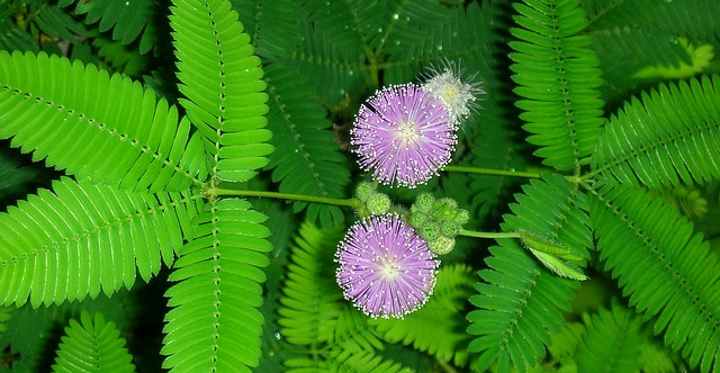
At first glance, the sensitive plant doesn’t look so unusual. However, when you touch the leaves, something cool happens. Leaflets on the fern-like leaves respond to your touch. They fold into the center of the stem and look like they have gone to sleep. This unique leaf action has earned them other common names such as ‘bashful’ plants, ‘shameplants,’ ‘humble’ plants, and ‘sleeping’ plants.
To care for a sensitive plant indoors, it needs to be in a bright location but away from direct sunlight. Grow it in well-draining soil and only water when the soil is partly dry.
Mother of Thousands (Bryophyllum daigremontianum)
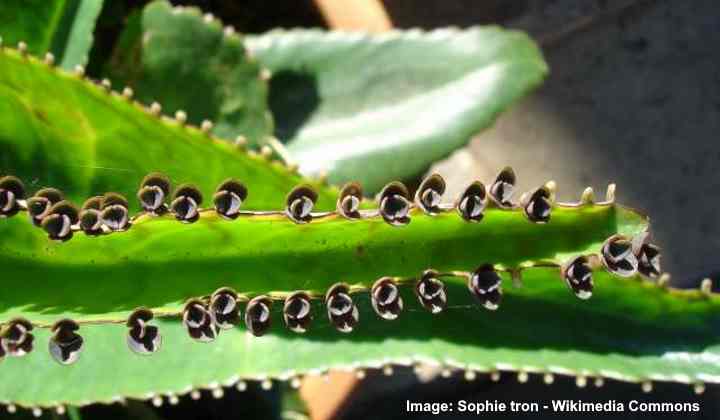
The unusual feature of the ‘mother of thousands’ plant is the unique leaves on the plant. From a distance, the leaf edges look serrated, but up close, you will see that the sides have tiny buds. These spoon-shaped spurs form roots and you can use them to propagate new plants.
Other names for this unusual succulent include devil’s backbone, alligator plant, and Mexican hat plant. All these common names refer to the unique plantlets that grow on the leaves.
A word of caution—the ‘mother of thousands’ is highly toxic, and you should keep it away from cats, dogs, and children.
Donkey’s Tails (Sedum morganianum)

Another very unusual succulent is Donkey’s Tail, also called Burro’s Tail. The name comes from the long trailing succulent stems that grow from the plant. The stems hang down vertically and have small, plump bluish-green leaves. Because the stems can grow up to 24” (60 cm) long, it is best to grow your Donkey’s Tail plant in a hanging basket.
Keep the plant in bright full sun for best results and only water the plant occasionally. Too much dampness can quickly kill this unusual houseplant.
Living Stones (Lithops)
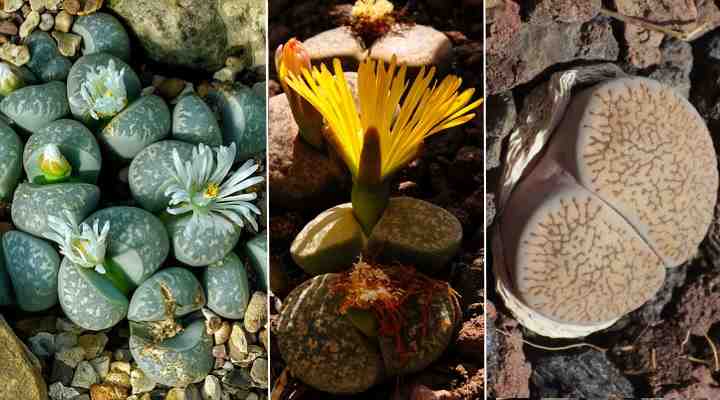
Any plant called ‘living stones’ has to be unusual—and Lithops certainly ranks among cool and unusually-looking plants. Also called pebble plants, these small succulents look like little stones. The cool plant consists of pairs of fleshly leaves that seem fused. In spring, new leaves push their way through the slit between the old leaves.
Interestingly, during an intense drought, Lithops disappear under the ground to help preserve moisture.
Living stone plants are easy to care for at home. All you need is to put these unique plants in a sunny location planted in sandy, well-draining soil. They only need occasional watering in winter and should be dry throughout the summer. Look after these fascinating plants well, and they will reward you with beautiful flowers in the fall.
Money Tree (Crassula ovata)
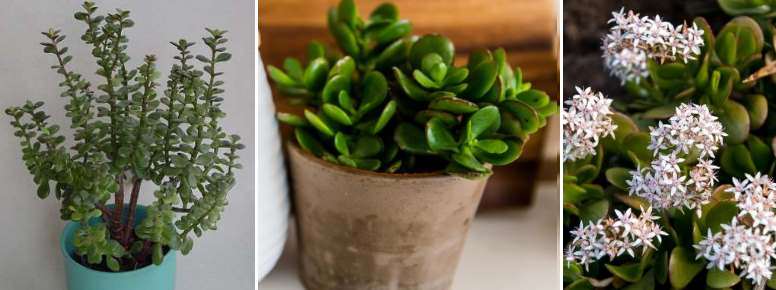
The unusual thing about money tree isn’t that it brings you good luck, but it seems to thrive on neglect. Also called the jade plant or lucky plant, this succulent has thick woody stems and thick fleshy oval leaves. Some varieties of jade plants have delicate red blushing along the leaf margins. For unusual jade plants, look for tricolor variegated varieties.
Caring for this money plant isn’t left up to luck. You only need to water it occasionally in summer and even less frequently in winter. Grow in well-draining soil and put it in a bright spot.
Jade plants are toxic to cats, dogs, and other animals. If you have sensitive skin, you should wear protective gloves when handling the plant.
Bunny Ears Cactus (Opuntia microdasys)
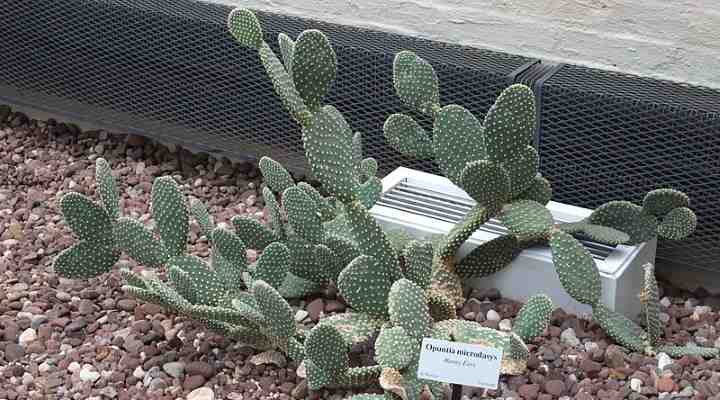
Bunny ears cacti are a funny-looking type of plant thanks to the round cactus leaves that grow on the top of larger leaves. Other names for this unusual cactus are polka-dot cactus—due to the tiny clusters of white hair-like spines—and angel’s wings cactus.
Rare Houseplants
Some types of rare houseplants are also surprisingly easy to care for at home. Read on to find out about some more unusual indoor plants for your home.
Silver Vase Plant (Aechmea fasciata)
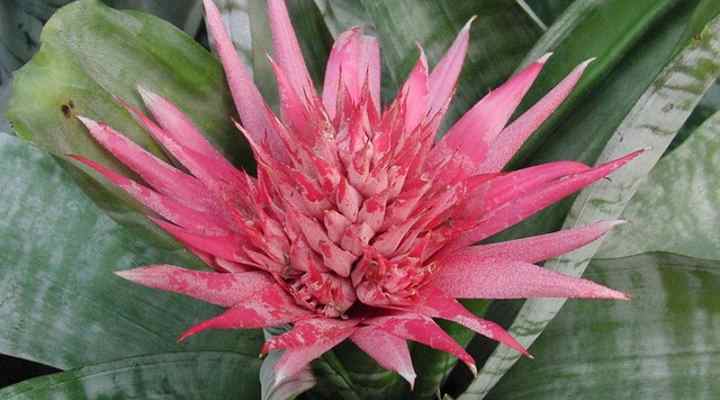
The silver vase plant is an unusual and beautiful flowering plant that is easy to grow indoors. Sometimes called the urn plant, this bromeliad has thick, arching, leathery leaves that are a silvery-green color. These leaves overlap to create a unique vase-shaped plant.
When this exotic plant flowers, it stands out from all other types of houseplants. An elegant showy pink spiky flower emerges from the center of the plant to create an impressive, eye-catching houseplant.
Echeveria
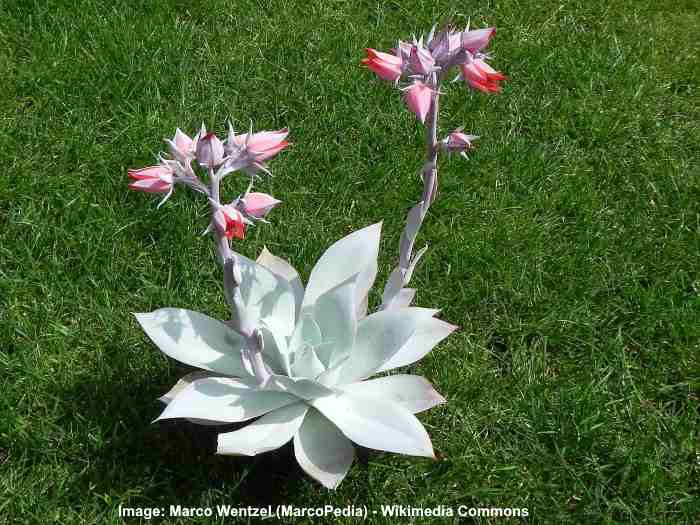
In the picture: Echevaria cante
Although many echeveria succulents are common houseplants, there are fascinating rare types of echeveria that are easy to grow. Many echeveria plants have thick fleshy leaves in the shape of a rose. Being a type of succulent, these plants only require occasional watering and plenty of bright light.
For some of the rarest plants in the echeveria family, choose from the following examples:
- Lipstick echeveria—This succulent has the classic echeveria shape with shiny red leaves reminiscent of bright lipstick.
- Echeveria chihuahuensis ‘Raspberry Dip’—Another rare and unusual echeveria with oddly-shaped pale green leaves and red tips.
- Echeveria cante—A rosette succulent with pale blue-green leaves that are almost white. With the proper care, yellowish-orange flowers appear in summer.
- Echeveria gibbiflora ‘Metallica’—It’s rare to find a succulent with light pink leave, but the ‘Metallica’ cultivar has metallic bronze leaves with pink margins.
Alocasia
Some species of Alocasia plants are very rare houseplants, but they are effortless to look after. Alocasia plants are known for their broad leaves with prominent veins and striking colors. These rare tropical plants need bright light when growing in pots indoors and regular misting to increase humidity.
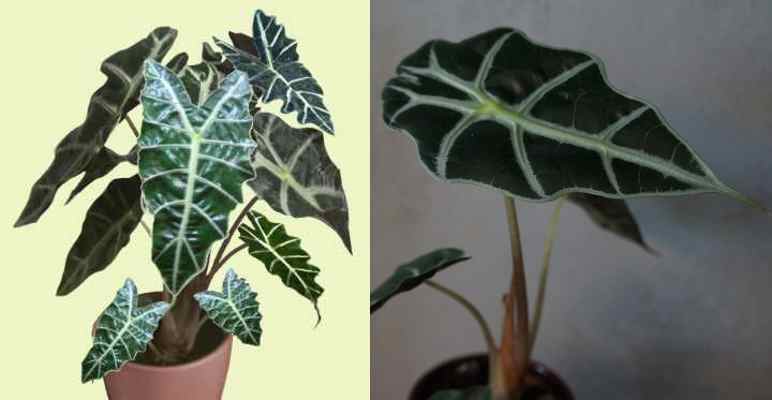
Alocasia Amazonica ‘Polly’ (African Mask Plant)
Some examples of rare alocasia houseplants include the Alocasia amazonica ‘Polly’ with triangular-shaped green leaves and bright white veins. Or, there is the Alocasia cuprea ‘Red Secret’ with dark purple leaves and deep veins.
Banana Shrub (Magnolia figo)

Although this rare, unusual tropical plant is called the banana shrub, is it closely related to magnolias, not banana plants. Growing these shrubby houseplants indoors brings some of the tropics inside. Lush green foliage and yellow-colored or purple magnolia blossoms are the captivating features of this rare plant. However, when the plant flowers, your room is filled with the sweet scent of bananas.
It is difficult to find this subtropical plant for sale in local nurseries or garden centers. If you want to grow this plant, then you should look for it online.
Watermelon Peperomia (Peperomia argyreia)
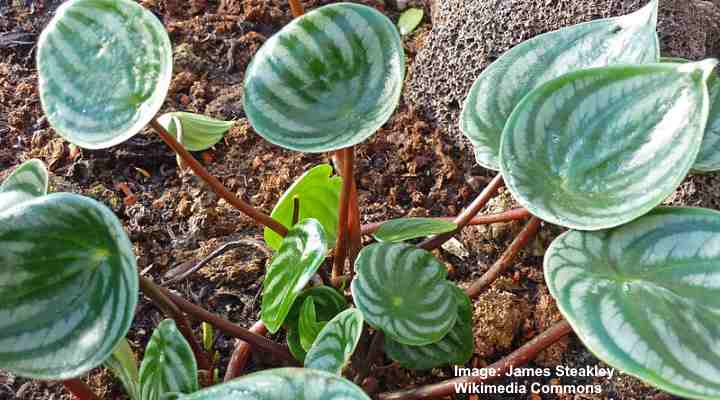
Peperomias are a well-known houseplant that you can grow without any fuss. One of the rarest and most unusual types of peperomia is the watermelon cultivar. The unique markings on the oval leaves with green and dark green stripes resemble the rind of a watermelon.
This plant, with its funny-looking leaves, grows well in low-light environments and is perfect for an office desk or room that lacks sunlight. The plant can withstand some neglect and grows well when root-bound—so, you don’t even have to repot it regularly.
Jewel Orchid (Ludisia discolor)
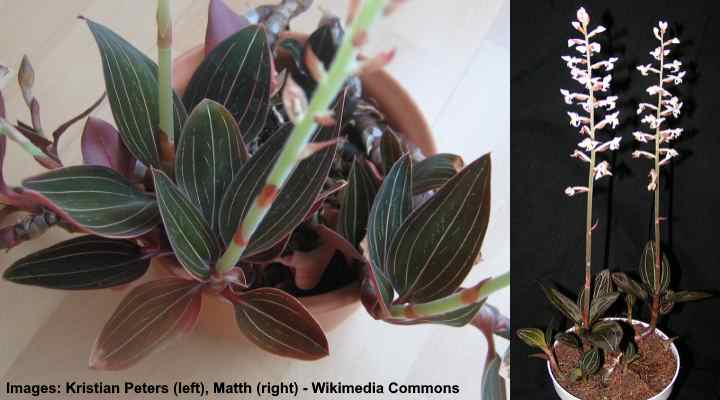
The jewel orchid is a rare type of plant because it’s the only one of its kind in this orchid genus. The elongated oval leaves are some of the most unusual and unique you will find on any houseplant. Leaves are dark green with beautiful white pinstripe markings running from the base to the tip. Maroon colors on the leaf underside just add to the interesting foliage on this unique type of orchid.
Lifesaver plant (Huernia zebrina)

If you’re looking for one of the rarest, strangest, and most unique flowers, then the lifesaver plant ticks all the boxes. This perennial succulent has jaggy-looking green fleshy stems. However, that’s not the unusual feature of this rare plant. The lifesaver plant produces chocolate-colored star-shaped blooms with brown zebra stripes.
Related articles:


